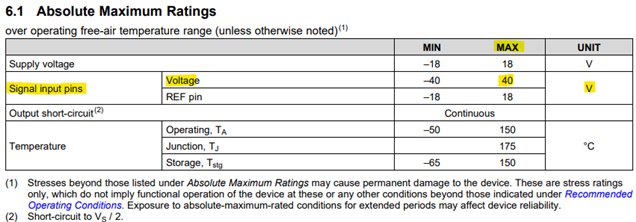Hi, TI expert
A customer company is mass producing a product using INA828, but a problem has occurred and I have a technical inquiry.
For more information, please check the circuit diagram and problem details in the attached document (PPT) below.
INA828ID IC floating inquiry.pptx
The contents of the attachment are as follows.
- When the voltage source is OPEN (circuit floating), the voltage is charged to the condenser due to noise coming through the Voltage Sensing Cable (BATT+, BATT-), and a stray voltage is measured. (It was confirmed that stray voltage (3 ~ 5V) is measured)
- The problem was solved by inserting a full down RES into the relevant area, and the voltage rise can be confirmed through testing, but technical documentation is required to confirm that there is no problem.
- Customer request:
Q1) It is necessary to check how far the stray voltage rises.
Q2) I need evidence that the INA828ID will not be damaged when the voltage rises above 12V due to the floating circuit. Is it possible to provide a technical explanation?
Q3) Based on the voltage rating in the spec section of the datasheet, I don't think there will be any problems, is that correct?


Q4) Is there any technical data that can be used as a basis for the above?
Please answer the 4 questions above. Thank you.

